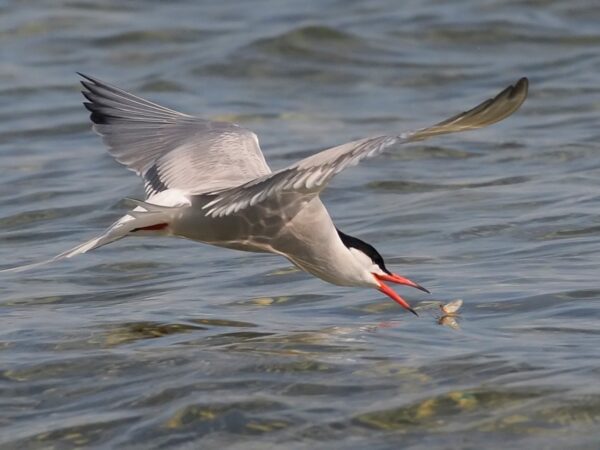
Looking at them, you wouldn’t guess that the unisexual Ambystoma salamanders are any different than the other members of what was once considered their group.
These interlopers were previously grouped with five other mole salamander species: the tiger salamanders with yellow stripes; the blue-spotted salamander, marked as its name suggests; the brownish smallmouth salamander and Jefferson salamander; and the pale streamside salamander. All five species have lithe, wet bodies, bulbous eyes, and cutely smiling faces.
What sets the mysterious unnamed Ambystoma species apart is something that can only be seen by looking at their genetics. They’re an all-female lineage—and they steal genetic material from all five other species of salamander in their region, a feat that would seem impossible if not for the fact that these lady salamanders have been around for more than 5 million years.
“We often get asked, ‘What is the species name for these organisms?’ And the answer is that we don’t have one because they don’t play by the rules of what we would typically call a species,” said Rob Denton, professor of biology at Marian University. Denton is a recent recipient of the National Science Foundation Career Grant, a five-year award worth $1.1 million that will go towards better understanding these strange salamanders.

Ambystoma salamander (Photo courtesy of Zac Herr/zthphotography)
Up until the last few decades, no one realized the unisexual salamanders were anything unusual.
“For a long while, these salamanders were thought to be typical hybrids—that is, people thought that a blue-spotted salamander and a Jefferson salamander could reproduce and the result would be newly formed hybrid offspring. In fact, though, none of the sexual species involved interbreed in the wild,” Katy Greenwald, a professor of biology at Eastern Michigan University, said in an email interview.
That perception of these female salamanders being hybrids changed when scientists started doing genetic analyses. Some offspring of the unisexual salamanders are straightforward clones of their mothers. But others had extra pairs of chromosomes in addition to the chromosomes from the mother—sometimes three chromosomes, or four, or even five, all from the different male species.
“If you want a human example, it’s like if you were to take a sample of my DNA and it had a set of chromosomes from my mother and father, but then additional sets from an orangutan and chimpanzee and gorilla,” Denton said.
Those vastly different ape species are approximately how distantly related all the species of mole salamanders are from one another.
Scientists aren’t quite sure of how these salamanders manage to combine so much divergent genetic material without their offspring having any ill effects. The reproductive process is a little more straightforward. Male salamanders of all these species will leave packets of sperm around the wetlands in the spring. The unisexual females seek out the sperm, absorb it into their own genitals, and this stimulates reproduction. The females can continue seeking out sperm packets and incorporating all that genetic material into their offspring, or they can make simple clones.
As for the females who belong to one of the distinct species, whether it’s the blue-spotted salamanders or the Jefferson salamanders, they can’t mate with males of different species.
Because the process is thought to be totally unique to this line of unisexual salamanders, it was given its own name: kleptogenesis, in which females steal genetic material.
Denton and other scientists are now trying to understand whether this unusual strategy impacts the survival of the unisexual Ambystoma salamanders. On one hand, the unisexual species are ecologically dominant and sometimes outnumber the sexually reproducing salamanders by two-to-one or three-to-one. They also regrow their tissue about 1.5 times faster than their sexual relatives, which is helpful in cases of a lost tail or limb.
But the unisexual eggs have a much higher mortality rate, meaning not as many salamanders survive to adulthood. Scientists have also done tests of the salamanders’ speed and endurance by making them walk on little treadmills, and the unisexual salamanders don’t have as much physical endurance. This is critical for a creature that must sometimes walk quickly to access the transient wetlands they need for mating in the spring.
The even bigger question is how the unisexual salamanders manage to combine so much genetic material without causing defects to their offspring. Though most people are used to thinking of DNA as straightforward genetic material combined from a mother and father, it’s actually a little more complicated, Denton said. We have DNA in the nucleus of our cells—nuclear DNA—that combines genes from both parents. But inside the mitochondria (other parts of the cell that produce energy), there’s a form of DNA that comes solely from the mother, called mitochondrial DNA.
“There are many diseases and hereditary issues that come from miscommunication between mitochondrial and nuclear genomes,” Denton said. “Even small things can lead to problems with metabolic diseases and infertility. These animals can somehow navigate this issue. There’s something about the way they manage genomic material that allows them to pull this off, and right now we have no idea how.”
Having a better understanding of how the unisexual salamanders manage to incorporate so much disparate genetic material into their offspring could help us understand human biology better as well.
But both Denton and Greenwald emphasized that the salamanders are worthy of study in their own right, regardless of what they might tell us about humans. Since they rely on wetlands for reproduction—environments at risk of destruction by human development—learning more about the salamanders may help with conservation efforts around the Great Lakes.
Greenwald added that getting to see the cute salamanders is also a joy in and of itself.
“There’s a big part of me that still just has that childlike appreciation for how cute they are and how delightful it is to roll a log and find these perfect little gummy creatures!” she said. “If folks haven’t spent hours staring into woodland vernal pools, observing all the amazing diversity of life that turns up in something that looks like a glorified puddle, I just can’t recommend it highly enough.”
Catch more news at Great Lakes Now:
Sturgeon Restoration: Streamside hatcheries on the Manistee, Milwaukee and Maumee rivers
Featured image: Salamander walking on a treadmill (Photo courtesy of Rob Denton)




